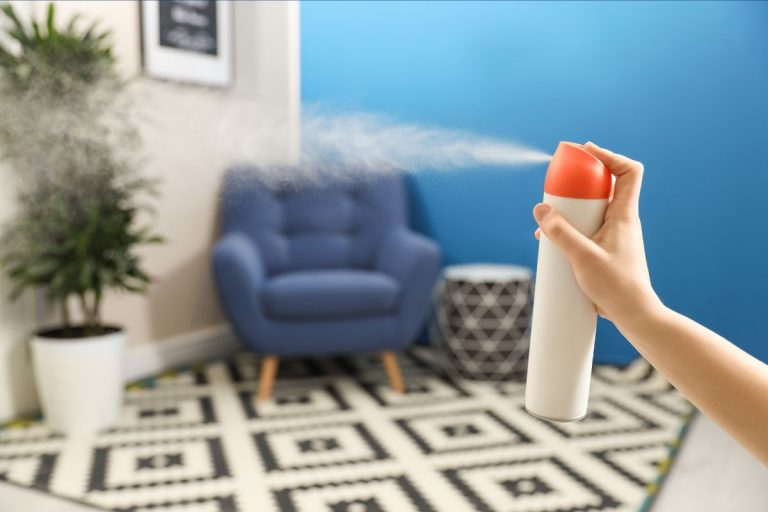Ever since I was a child, I’ve always had curly hair. Everything about it from washing, and treating, to sleeping with it can be challenging. From my experience comes this article on how to sleep with curly hair.
I’ll share everything you need to know about sleeping with curly hair. Read on.
Proper maintenance of curly hair at night needs an informed hair care routine. Keeping your beautiful curls from tangling at night needs commitment every day. All the strategies I share in this primer will help you keep your curly hair in mint condition without being frizzy, flattened, or having dents when morning comes.
How To Sleep With Curly Hair
Maintaining curly hair throughout the night should not be as challenging as many people claim it to be. However, you must know exactly how to go about the whole thing.
You can sleep with curly hair in several ways. Some of my most preferred include:
- Use a satin bonnet or silk scarf
- Consider mini braids
- Utilize pillowcases for curly hair
1. Utilize Pillowcases For Curly Hair
Do you know that there are specific pillows tailored for curly hair? Oh yes, they exist! When you have curly hair, you not only need to be careful about the kind of bedding you choose but also the type of pillow.
A poor choice of pillows or bedding will not only make your sleep uncomfortable but will also change the feel and look of your curly hair the following day.
Certain materials can irritate or destroy the condition of your curly hair. For instance, pillows made of material featuring static electricity or energy can worsen the feel and look of the hair.
The kind of sleeper you are can also harm curly hair. Are you the type that seems to toss and turn throughout the night? If yes, then you need to try your best and limit your movement as the last thing you want is to wake up with bad-looking hair.
Other bedding materials suck moisture from your hair. Although you can find countless ways to hydrate your hair once you wake up, it certainly will give you so much unnecessary work. With the right material for your beddings and pillow, taking care of your curly hair will be a breeze.
So which is the best material for pillows if you have curly hair? Well, from my extensive research, I can authoritatively state that silk is the best. Your choice of pillow can be part silk or total silk. Silk is efficient when it comes to keeping your skin and hair moisturized. This makes a difference when it comes to the frizzing of your hair.
Another benefit of silk is the fact that naturally, it is rich in amino acids. These go miles in the rejuvenation of your hair. In addition to that, amino acids help your hair tame waves that are not only stubborn but also can be out of control easily. With them, your curly hair will always remain less breakable, and healthier.
Pillowcases made of silk are effective when it comes to minimizing the chances of wrinkling and bunching up. They are great at resisting trapping hair which is a good attribute if you are allergic to pet hair.
With the slippery nature of silk pillows, the last thing you need to worry about your curly hair is it getting tangled.
Satin vs. Silk For Curly Hair
Most girls with oily and curly hair grapple with which of these two materials to settle for. The truth of the matter is that each of them brings with it its pros and cons. Both of them are great at helping you enjoy a tangle-free and frizz-free hair in the morning while at the same time preventing moisture from escaping from your hair.
Silk and satin pillowcases, bonnets, and scarves are in high demand and popular among those with curly hair. They are the best alternative to cotton. So, which of these two should you settle for?
Without a doubt, silk tops the list of the most comfortable, breathable, and softest fabrics available. Satin, on the other hand, unlike silk, isn’t natural but a weave. It is made by combining other fabrics such as polyester, rayon, and nylon. Manufacturers can also incorporate silk to create satin.
Silk boasts more strength compared to satin. It features a relatively more shimmery appearance. Satin, on the other hand, brings with it a glossy surface coupled with a dull back.
While both materials emanate from china, producing silk is harder. One silk thread needs silk from countless silkworms. Because of the hard production process of silk, it is costlier compared to satin. The main source of satin is synthetic fiber.
If you want to enjoy the same benefits that silk brings with it but do not have the funds, you can settle for a special type of satin – charmeuse satin. This type of satin is not only durable but also offers a floating experience with excellent draping.
Regardless of the material you choose for your curly hair, it is important to note that a scarf, bonnet, or pillowcase can all be effective at protecting your hair’s curls as you sleep
2. Use a Satin Bonnet or Silk Scarf
We have already established in the section above that satin and silk are the two most popular materials for scarfs, bonnet, and pillowcases. These are effective at helping you sleep with curly hair unharmed.
Now, a satin bonnet or silk scarf, if used in the right way, can be handy at helping you maintain your hair’s curls even as you sleep. The first thing you need to do is put your hair in a pineapple. Check out this video on how to do it. It is simply a loose ponytail at the top of your head.
When doing it, make sure you use a thick scrunchy such as this one. Thinner ones tend to leave indents on your hair once you wake up in the morning. The last thing you want is to wake up with creased hair. Thick ones not only hold your hair perfectly in place but are also loose.
Note:
Remember to be gentle when gathering your hair together.
Avoid too tight crosses and brushing of your curly hair.
Just use your hands to gently bring all your hair together to the top of your head. The scrunchy should only be wrapped just one time. The rule of thumb is to have a loose pineapple, not a tight one.
Once your hair is in that pineapple style, you can either use a satin bonnet or silk scarf to wrap your hair.
When using the bonnet, all you need to do is stuff your hair into it gently. Do it from the back as you move to the front and push your hair inside. Once you wake up in the morning, gently take it off but this time around, do it from the front to the back.
A great attribute about a bonnet is that it is stretchable and can loosen to your preferred level.
If you opt for the silk scarf, it’s a bit different. Silk scarfs are better compared to bonnets as they tend to secure the hair better. The first thing you need to do is take one side, preferably the one on the tag and bring it diagonally to the other/opposite side.
Once you do that, take the longest side, flip your head down, and put it at the base of your head. After that, tie under your hair, and tie the part that remains to the back of the head. You can sleep with your hair just like that.
However, if you have long curly hair, you can gently take the flap and cover the remaining part of the hair. Once you wake up in the morning, repeat the process from the back gently.
- How to tie a silk scarf – check this video
- How to put a satin bonnet – check this video
3. Consider Mini Braids
This is a highly popular method for sleeping with people having curly hair. The truth is that I was a bit skeptical about it at first but I’ve come to learn that it is quite handy at maintaining your beautiful curls. One of the things you should do before you step into your bed to sleep is to braid your curly hair.
Doing so goes miles in making sure that your hair remains in place. This strategy is magical particularly for those with long or extended curly hair. The most comfortable methods to handle mini braids are styling your hair to be multiple braids, French braids, or loose braids.
Of great importance to note is that the looser your braid is, the higher the chances your chances of maintaining a natural curl pattern. Do you find the French braids for curly hair difficult to achieve? If yes, all you need to do is divide your hair into 5 – 7 parts and then form a regular braid.
Also Read:





